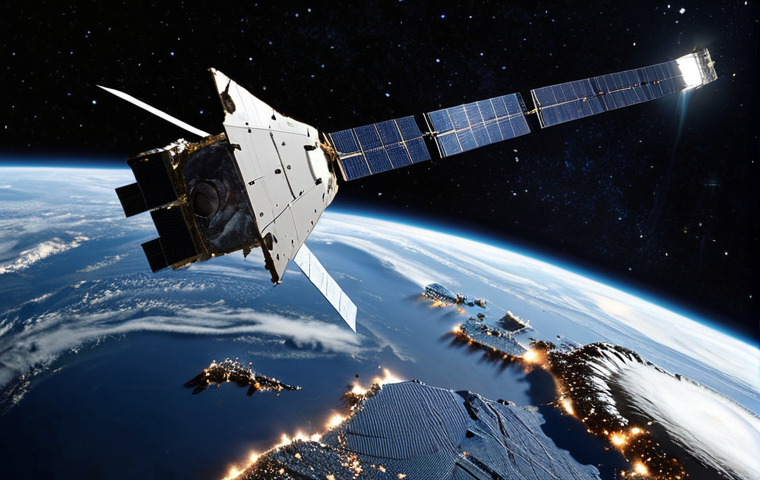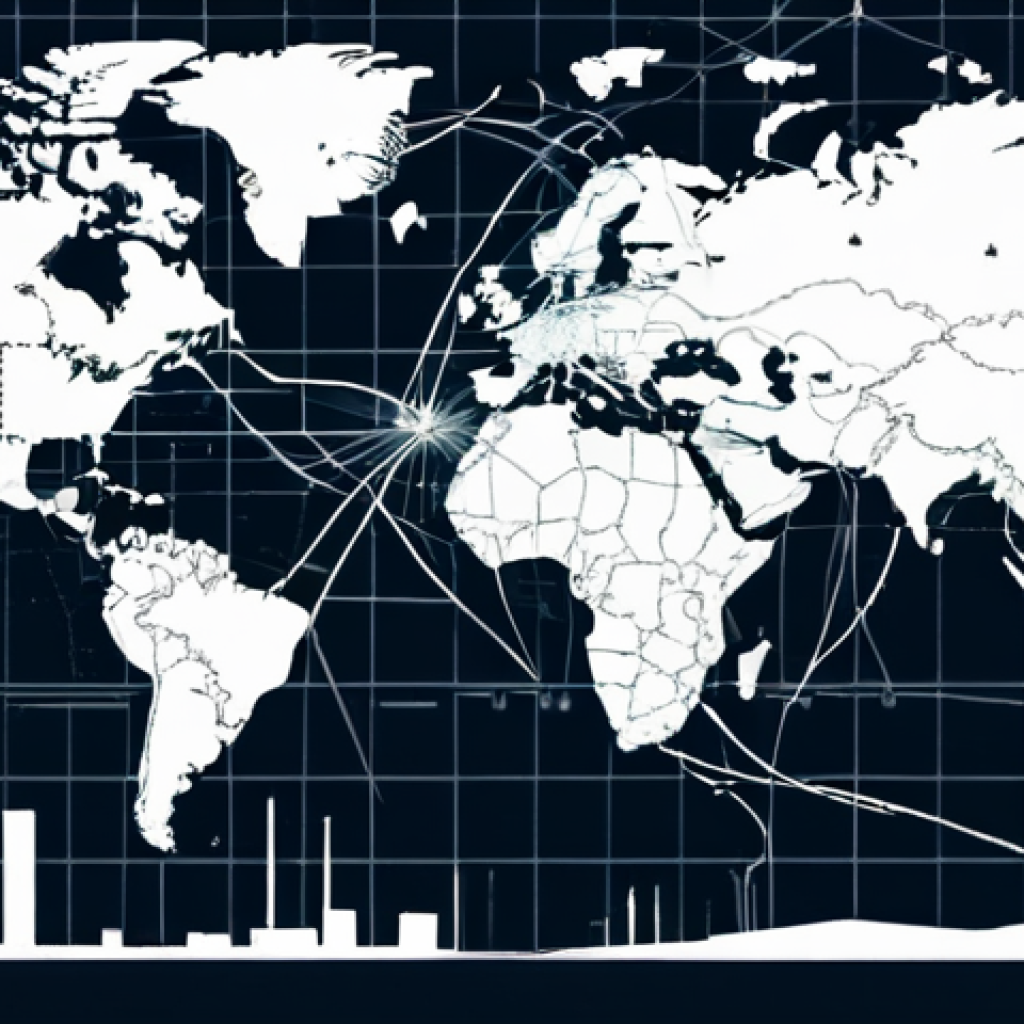Imagine a world where metal birds soar across borders, and beyond, where satellites hum a silent tune. Governing this intricate dance between sky and space is a fascinating blend of International Air Law and Space Law.
From the Chicago Convention that laid the foundation for peaceful air navigation to the Outer Space Treaty that declared space the province of all mankind, these legal frameworks are crucial for ensuring safety, security, and cooperation.
I’ve always been intrigued by how these laws, often written in abstract legal jargon, actually impact our everyday lives, from booking a flight to witnessing a satellite launch.
It’s a field constantly evolving with new technologies and challenges. Let’s delve deeper into this fascinating realm. We’ll be sure to clarify the specifics of International Air and Space Law in the following discussion.
Navigating the Skies: Understanding Airspace SovereigntyThe principle of airspace sovereignty is the cornerstone of international air law. Each nation has complete and exclusive sovereignty over the airspace above its territory.
This might seem straightforward, but it becomes complex when considering overflight rights, particularly for commercial aviation. I remember being on a flight from New York to Tokyo and seeing the flight path arc dramatically northward.
I later learned this was to avoid certain countries’ airspaces, a stark reminder of how airspace sovereignty dictates flight routes and potentially adds time and cost to air travel.
Nations can grant permission for foreign aircraft to enter their airspace, but they are under no obligation to do so. This is where bilateral and multilateral agreements come into play, streamlining the process for scheduled international flights.
These agreements often specify conditions, such as adherence to air traffic control regulations and payment of overflight fees. For smaller nations, these fees can be a significant source of revenue.
1. Military Considerations
Military aircraft movements add another layer of complexity. Unauthorised entry into a nation’s airspace can be considered a violation of sovereignty and may lead to interception.
The rules of engagement in such situations are carefully defined to avoid escalation, but incidents do occur, highlighting the ever-present tension between national security and freedom of navigation.
2. The Chicago Convention: A Foundation
The Chicago Convention of 1944 laid the groundwork for international air navigation. It established the International Civil Aviation Organization (ICAO), which sets standards and regulations for air safety, security, and efficiency.
The convention also outlines the rights and obligations of states concerning air navigation, including the principle of non-discrimination. This means that states should not discriminate against aircraft of other nations when granting overflight rights, unless there are valid safety or security concerns.
Expanding Horizons: Commercialization and Space LawSpace, once the exclusive domain of government-funded exploration, is now increasingly commercialized.
Companies like SpaceX and Blue Origin are leading the charge, offering launch services and even planning space tourism ventures. This commercialization presents new legal challenges.
Who owns the resources extracted from an asteroid? What happens if a satellite malfunctions and causes damage to another satellite or even ground infrastructure?
These are questions that space law is grappling with. I remember reading about the first commercial resupply mission to the International Space Station.
It struck me then how far we’d come and how much the legal landscape would need to adapt. 1. Liability Issues in Space
The Outer Space Treaty addresses liability for damage caused by space objects, but the details are often vague.
Determining fault and assigning liability in space is incredibly complex. What if debris from a defunct satellite collides with an active satellite? Was it due to negligence or simply an unavoidable accident?
The answers to these questions have significant financial implications. 2. The Role of the Outer Space Treaty
The Outer Space Treaty of 1967 is the cornerstone of international space law.
It declares that space is free for exploration and use by all states, prohibits the placement of weapons of mass destruction in space, and establishes the principle of state responsibility for activities in space.
However, the treaty leaves many questions unanswered, particularly regarding the commercial exploitation of space resources. Space Debris: An Ever-Growing ProblemOne of the most pressing challenges in space law is the growing problem of space debris.
Millions of pieces of defunct satellites, rocket stages, and other debris orbit the Earth, posing a significant threat to active satellites and even the International Space Station.
A tiny piece of debris traveling at high speed can cause catastrophic damage. 1. Mitigation Efforts
Efforts are underway to mitigate the creation of new debris, such as requiring satellites to deorbit at the end of their lives.
However, removing existing debris is a much more complex and costly undertaking. Various technologies are being developed, including nets, harpoons, and even lasers, to capture and remove debris from orbit.
2. Legal Frameworks for Debris Removal
The legal framework for debris removal is still evolving. Who has the right to remove debris?
What happens if debris removal causes damage to another satellite? These are questions that need to be addressed to ensure that debris removal efforts are conducted safely and responsibly.
The Spectrum of Regulation: Radio Frequencies and Satellite OrbitsThe allocation of radio frequencies and satellite orbits is another critical area of international space law.
Radio frequencies are a finite resource, and satellites need specific orbital slots to operate effectively. The International Telecommunication Union (ITU) plays a crucial role in coordinating the allocation of these resources to avoid interference.
1. The First-Come, First-Served Approach
Historically, the ITU has used a “first-come, first-served” approach to allocating orbital slots. However, this approach has been criticized for favoring wealthier nations and companies that can afford to launch satellites quickly.
There is a growing debate about whether a more equitable system is needed. 2. Ensuring Fair Access
Ensuring fair access to radio frequencies and orbital slots is essential for promoting space development by all nations.
This may require innovative approaches, such as spectrum sharing and the use of advanced technologies to minimize interference. Drones and the Law: A New Frontier in AirspaceUnmanned aerial vehicles (UAVs), or drones, are rapidly transforming aviation.
From package delivery to infrastructure inspection, drones are finding applications in a wide range of industries. However, the increasing use of drones raises new legal and regulatory challenges.
1. Privacy Concerns
One of the biggest concerns is privacy. Drones equipped with cameras can collect vast amounts of data, raising questions about surveillance and data protection.
Regulations are needed to ensure that drones are used responsibly and that privacy rights are protected. 2. Air Traffic Integration
Integrating drones into existing air traffic management systems is another challenge.
Drones need to be able to safely share airspace with manned aircraft, which requires new technologies and procedures. Here’s a summary table on the key differences and similarities between International Air Law and Space Law:
| Aspect | International Air Law | International Space Law |
|---|---|---|
| Governing Body | International Civil Aviation Organization (ICAO) | United Nations Committee on the Peaceful Uses of Outer Space (COPUOS) |
| Key Treaty | Chicago Convention (1944) | Outer Space Treaty (1967) |
| Focus | Air navigation, safety, security | Peaceful use of outer space, liability for damage |
| Sovereignty | National sovereignty over airspace | Outer space is not subject to national appropriation |
| Current Issues | Drone regulation, airspace congestion | Space debris, commercialization of space |
| Enforcement | National aviation authorities | Limited enforcement mechanisms, relies on international cooperation |
The Future of Air and Space Law: Adapting to ChangeBoth international air law and space law are constantly evolving to adapt to new technologies and challenges.
As aviation becomes more automated and space activities become more commercialized, these legal frameworks will need to be updated to ensure safety, security, and sustainability.
1. Balancing Innovation and Regulation
Finding the right balance between fostering innovation and ensuring adequate regulation will be crucial. Overly restrictive regulations can stifle innovation, while inadequate regulations can lead to safety risks and environmental damage.
2. The Importance of International Cooperation
International cooperation is essential for addressing the challenges facing air and space law. No single nation can solve these problems alone.
By working together, nations can develop effective legal frameworks that promote the safe and responsible use of air and space. Navigating the Skies: Understanding Airspace Sovereignty
The principle of airspace sovereignty is the cornerstone of international air law. Each nation has complete and exclusive sovereignty over the airspace above its territory. This might seem straightforward, but it becomes complex when considering overflight rights, particularly for commercial aviation. I remember being on a flight from New York to Tokyo and seeing the flight path arc dramatically northward. I later learned this was to avoid certain countries’ airspaces, a stark reminder of how airspace sovereignty dictates flight routes and potentially adds time and cost to air travel. Nations can grant permission for foreign aircraft to enter their airspace, but they are under no obligation to do so. This is where bilateral and multilateral agreements come into play, streamlining the process for scheduled international flights. These agreements often specify conditions, such as adherence to air traffic control regulations and payment of overflight fees. For smaller nations, these fees can be a significant source of revenue.
-
Military Considerations
Military aircraft movements add another layer of complexity. Unauthorised entry into a nation’s airspace can be considered a violation of sovereignty and may lead to interception. The rules of engagement in such situations are carefully defined to avoid escalation, but incidents do occur, highlighting the ever-present tension between national security and freedom of navigation.
-
The Chicago Convention: A Foundation
The Chicago Convention of 1944 laid the groundwork for international air navigation. It established the International Civil Aviation Organization (ICAO), which sets standards and regulations for air safety, security, and efficiency. The convention also outlines the rights and obligations of states concerning air navigation, including the principle of non-discrimination. This means that states should not discriminate against aircraft of other nations when granting overflight rights, unless there are valid safety or security concerns.
Expanding Horizons: Commercialization and Space Law
Space, once the exclusive domain of government-funded exploration, is now increasingly commercialized. Companies like SpaceX and Blue Origin are leading the charge, offering launch services and even planning space tourism ventures. This commercialization presents new legal challenges. Who owns the resources extracted from an asteroid? What happens if a satellite malfunctions and causes damage to another satellite or even ground infrastructure? These are questions that space law is grappling with. I remember reading about the first commercial resupply mission to the International Space Station. It struck me then how far we’d come and how much the legal landscape would need to adapt.
-
Liability Issues in Space
The Outer Space Treaty addresses liability for damage caused by space objects, but the details are often vague. Determining fault and assigning liability in space is incredibly complex. What if debris from a defunct satellite collides with an active satellite? Was it due to negligence or simply an unavoidable accident? The answers to these questions have significant financial implications.
-
The Role of the Outer Space Treaty
The Outer Space Treaty of 1967 is the cornerstone of international space law. It declares that space is free for exploration and use by all states, prohibits the placement of weapons of mass destruction in space, and establishes the principle of state responsibility for activities in space. However, the treaty leaves many questions unanswered, particularly regarding the commercial exploitation of space resources.
Space Debris: An Ever-Growing Problem
One of the most pressing challenges in space law is the growing problem of space debris. Millions of pieces of defunct satellites, rocket stages, and other debris orbit the Earth, posing a significant threat to active satellites and even the International Space Station. A tiny piece of debris traveling at high speed can cause catastrophic damage.
-
Mitigation Efforts
Efforts are underway to mitigate the creation of new debris, such as requiring satellites to deorbit at the end of their lives. However, removing existing debris is a much more complex and costly undertaking. Various technologies are being developed, including nets, harpoons, and even lasers, to capture and remove debris from orbit.
-
Legal Frameworks for Debris Removal
The legal framework for debris removal is still evolving. Who has the right to remove debris? What happens if debris removal causes damage to another satellite? These are questions that need to be addressed to ensure that debris removal efforts are conducted safely and responsibly.
The Spectrum of Regulation: Radio Frequencies and Satellite Orbits
The allocation of radio frequencies and satellite orbits is another critical area of international space law. Radio frequencies are a finite resource, and satellites need specific orbital slots to operate effectively. The International Telecommunication Union (ITU) plays a crucial role in coordinating the allocation of these resources to avoid interference.
-
The First-Come, First-Served Approach
Historically, the ITU has used a “first-come, first-served” approach to allocating orbital slots. However, this approach has been criticized for favoring wealthier nations and companies that can afford to launch satellites quickly. There is a growing debate about whether a more equitable system is needed.
-
Ensuring Fair Access
Ensuring fair access to radio frequencies and orbital slots is essential for promoting space development by all nations. This may require innovative approaches, such as spectrum sharing and the use of advanced technologies to minimize interference.
Drones and the Law: A New Frontier in Airspace
Unmanned aerial vehicles (UAVs), or drones, are rapidly transforming aviation. From package delivery to infrastructure inspection, drones are finding applications in a wide range of industries. However, the increasing use of drones raises new legal and regulatory challenges.
-
Privacy Concerns
One of the biggest concerns is privacy. Drones equipped with cameras can collect vast amounts of data, raising questions about surveillance and data protection. Regulations are needed to ensure that drones are used responsibly and that privacy rights are protected.
-
Air Traffic Integration
Integrating drones into existing air traffic management systems is another challenge. Drones need to be able to safely share airspace with manned aircraft, which requires new technologies and procedures.
Here’s a summary table on the key differences and similarities between International Air Law and Space Law:
| Aspect | International Air Law | International Space Law |
|---|---|---|
| Governing Body | International Civil Aviation Organization (ICAO) | United Nations Committee on the Peaceful Uses of Outer Space (COPUOS) |
| Key Treaty | Chicago Convention (1944) | Outer Space Treaty (1967) |
| Focus | Air navigation, safety, security | Peaceful use of outer space, liability for damage |
| Sovereignty | National sovereignty over airspace | Outer space is not subject to national appropriation |
| Current Issues | Drone regulation, airspace congestion | Space debris, commercialization of space |
| Enforcement | National aviation authorities | Limited enforcement mechanisms, relies on international cooperation |
The Future of Air and Space Law: Adapting to Change
Both international air law and space law are constantly evolving to adapt to new technologies and challenges. As aviation becomes more automated and space activities become more commercialized, these legal frameworks will need to be updated to ensure safety, security, and sustainability.
- Balancing Innovation and Regulation
Finding the right balance between fostering innovation and ensuring adequate regulation will be crucial. Overly restrictive regulations can stifle innovation, while inadequate regulations can lead to safety risks and environmental damage.
- The Importance of International Cooperation
International cooperation is essential for addressing the challenges facing air and space law. No single nation can solve these problems alone. By working together, nations can develop effective legal frameworks that promote the safe and responsible use of air and space.
In Conclusion

As we continue to push the boundaries of air and space exploration, understanding the legal frameworks that govern these activities becomes increasingly vital. From navigating airspace sovereignty to addressing the challenges of space debris, the evolution of international air and space law is critical for ensuring a safe, secure, and sustainable future for all.
Whether you’re an aviation enthusiast, a space enthusiast, or simply curious about the laws that shape our world, I hope this blog has shed light on the fascinating and complex realm of air and space law.
The journey through the legal landscapes of air and space is far from over, promising new challenges and innovations that will continue to shape our understanding of these vast frontiers.
Useful Information
1. Check the FAA’s website for the latest regulations on drone operation in the US. Remember to register your drone if it weighs over 0.55 lbs!
2. If you’re flying internationally, be sure to check the overflight regulations for each country you’ll be passing through. Fees can vary wildly!
3. Consider joining a local aerospace or aviation association to network with professionals in the field.
4. Interested in space law? Check out the journal “Space Policy” for in-depth articles on current legal issues.
5. Planning a trip to space? Keep an eye on companies like Virgin Galactic and Blue Origin for updates on space tourism opportunities and their associated legal considerations.
Key Takeaways
National sovereignty extends to the airspace above a country’s territory.
The Outer Space Treaty of 1967 is the primary legal framework for space activities.
Space debris is a growing concern, requiring international cooperation for mitigation and removal.
Drone regulations are evolving rapidly, emphasizing safety and privacy.
International cooperation is essential for addressing the challenges facing air and space law.
Frequently Asked Questions (FAQ) 📖
Q: What’s the deal with overbooking on flights? I’ve heard horror stories about people getting bumped even though they had a confirmed seat.
A: Ah, the dreaded overbooking scenario! It’s a common practice airlines use to maximize their profits, hedging against the likelihood of no-shows. Basically, they sell more tickets than seats, anticipating that some passengers won’t show up.
If everyone does show up, some folks get “bumped.” Now, the good news is, if you’re involuntarily denied boarding, the airline is typically required to compensate you, often with vouchers or cash, and they have to get you to your destination.
I actually got bumped once on a flight from Chicago to Denver, and ended up with a pretty sweet voucher. It was a hassle at the time, but looking back, it paid for a nice weekend getaway!
The rules about compensation vary depending on the airline and the country, so it’s always a good idea to know your rights beforehand.
Q: I keep hearing about “space debris.” Is that really a problem, and how does space law deal with it? It seems like a giant mess waiting to happen.
A: You hit the nail on the head – space debris is a massive problem! Think of it as cosmic litter – defunct satellites, rocket fragments, and other bits and bobs whizzing around Earth at incredible speeds.
These things pose a serious threat to operational satellites and even manned spacecraft, like the International Space Station. Space law tries to address this, mainly through the 1972 Liability Convention, which deals with damage caused by space objects.
However, it’s tricky because attributing fault and enforcing liability in space is incredibly complex. There’s a growing push for international cooperation in tracking and mitigating space debris, but it’s a long and challenging road.
I read an article recently about a proposed “space sweeper” satellite – pretty cool, but also a testament to how serious the problem has become.
Q: If someone discovers a valuable resource on the moon or an asteroid, can they just claim it? Seems like a modern-day gold rush waiting to happen.
A: That’s a question that keeps space lawyers up at night! The Outer Space Treaty of 1967, a cornerstone of space law, declares that outer space, including the moon and other celestial bodies, is not subject to national appropriation.
This means no country can claim sovereignty. However, the treaty is somewhat vague about exploiting resources. Some countries, like the US, have passed domestic laws allowing their citizens to extract and use space resources.
This is a grey area, and there’s a lot of debate about whether these laws are compatible with the Outer Space Treaty. I saw a panel discussion at a conference last year where lawyers were practically shouting at each other about this!
It’s definitely a situation where the law is struggling to keep up with technological advancements and entrepreneurial ambition. It’ll be interesting to see how it all plays out.
📚 References
Wikipedia Encyclopedia






